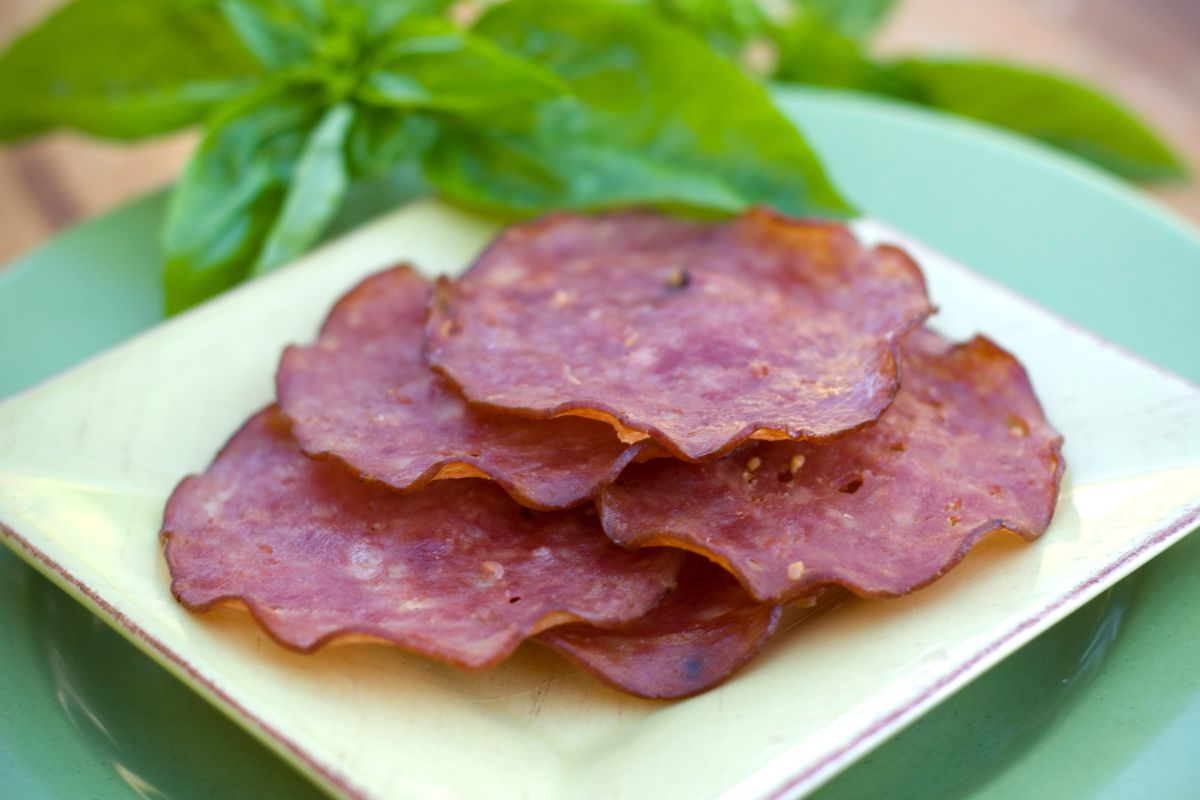Genoa salami, a glistening mosaic of ruby-red meat and pearly fat, is more than just a charcuterie staple. It’s a journey through Italian culinary history, a testament to artisanal mastery, and a symphony of complex flavors that have tantalized palates for centuries. To capture the essence of this enigmatic delight, we must delve into its origins, production secrets, and cultural significance, unraveling the story of a salumi that speaks of tradition, passion, and the undeniable pleasure of a perfectly sliced bite.
From Medieval Origins to Modern Masterpieces
The roots of Genoa salami stretch back to the medieval mists of Liguria, Italy. In the rugged valleys and seaside villages, the need for preserving meat led to the development of salting and air-drying techniques. Early versions likely resembled humble sausages, far from the refined delicacy we recognize today. Yet, the core principles of using coarse-ground pork, spices, and natural drying remained, setting the stage for centuries of refinement.
Through the Renaissance, skilled salumieri in Genoa began experimenting with flavors. Wine, garlic, and peppercorn joined the traditional salt and spices, adding layers of complexity to the palate. Trade routes with the East blossomed, introducing exotic ingredients like nutmeg and cloves, further enriching the salami’s character. By the 19th century, Genoa salami had established itself as a prized culinary treasure, lauded for its unique flavor profile and meticulous production methods.
The Alchemy of Salami Making
Today, crafting Genoa salami remains an art form passed down through generations. The process begins with hand-selected cuts of pork, a testament to the importance of quality ingredients. Coarse grinding preserves the meat’s texture, while a unique blend of spices – often a guarded family secret – infuses the mixture with warmth, sweetness, and subtle piquancy. Wine, usually Barolo or Barbera, plays a crucial role, adding depth and acidity, while fat marbling ensures melt-in-your-mouth tenderness.
Stuffed into natural casings, the sausages embark on a slow metamorphosis. Hung in cool, controlled cellars, they experience a delicate dance of temperature and humidity. Mold blooms as a natural protective layer, influencing the flavor development with its earthy notes. Over weeks or even months, the salami loses moisture, concentrating its flavors and aromas, and transforming into a dense, ruby-red treasure.
One cannot discuss Genoa salami without acknowledging its distinctive appearance. Typically, it is recognized by its elongated, horseshoe-like shape, adorned with a white, moldy exterior that forms during the curing stage.
A Mosaic of Flavor
Each slice of Genoa salami is a visual and gustatory revelation. The rich, deep red of the meat, flecked with pearly white fat, hints at the symphony of tastes waiting to be explored. The first bite delivers a satisfyingly firm texture, followed by a burst of savory goodness. Peppercorns sing on the tongue, their warmth balanced by the subtle sweetness of wine and nutmeg. Garlic adds a whisper of earthiness, while salt acts as a conductor, harmonizing the complex notes into a unified melody.
Beyond the Plate
Genoa salami’s versatility extends far beyond the charcuterie board. It graces focaccia sandwiches with its rich peppery punch, adds depth to pizzas and pasta dishes, and elevates salads with its savory bite. Thinly sliced on crusty bread with fig jam and gorgonzola cheese, it creates a luxurious Tuscan-inspired bruschetta. Wrapped around creamy burrata, its salty character becomes a playful counterpoint to the mozzarella’s sweetness.
A Cultural Icon
Genoa salami transcends its culinary role, becoming a symbol of Ligurian heritage and tradition. Its presence on a festive table signifies generosity and community, its rich aroma evoking memories of family gatherings and sun-drenched Italian landscapes. From humble origins to international acclaim, it continues to be a testament to the enduring power of artisanal food, reminding us that true mastery lies in respecting tradition while embracing creative exploration.
Regional Variations
While Genoa salami has its classic recipe, regional variations have emerged over time. Different areas may incorporate local spices or techniques, resulting in subtle nuances in flavor and texture. These variations add to the diversity and richness of the salami landscape.
Conclusion
Genoa salami is a love song for time, patience, and the art of salumi making. It’s a story etched in spice, whispered in the gentle caress of Ligurian winds, and savored in every delectable bite. So, the next time you encounter this ruby-red marvel, close your eyes, savor the symphony of flavors, and let your imagination wander through the cobbled streets of Genoa, where time slows down and every slice tells a tale of history, passion, and the enduring allure of good food. This is just a taste of the story surrounding Genoa salami.
By exploring its historical lineage, production secrets, culinary uses, and cultural significance, we have barely scratched the surface of this multifaceted enigma. Each slice holds its secrets, waiting to be unlocked by inquisitive palates and adventurous spirits. So, go forth, seek out the finest Genoa salami you can find, and embark on your culinary journey through the heart of Italian tradition. Buon appetito!
Tags: genoa salamigenoa salami recipeitalian culinary

